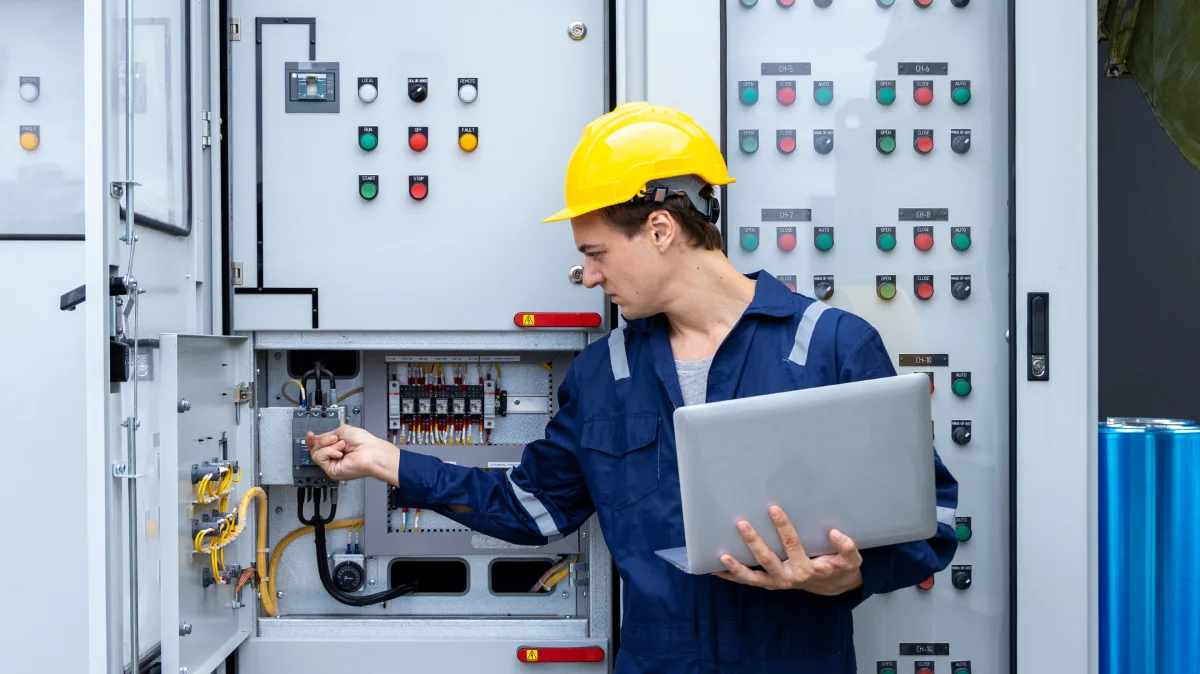Blog
- Home
- News & Article
- Exploring the Fundamentals of Building Automation and Control Systems
Exploring the Fundamentals of Building Automation and Control Systems

In today’s swiftly evolving technological realm, the integration of intelligent systems into buildings has surged dramatically. Among these advancements, Building Automation and Control Systems (BACS) stand out as pivotal components in modern building infrastructure. These systems, also known as Building Automation Systems (BAS), comprise interconnected networks of hardware and software designed to monitor and regulate environmental conditions within commercial, industrial, and institutional facilities. By overseeing various building systems, these automation systems not only ensure optimal operational performance but also prioritize the comfort and safety of occupants.
Traditionally, these control systems are implemented either during the construction phase of new buildings or as part of renovation projects aimed at replacing outdated control mechanisms.
What is Controlled?
Typically, building automation starts with the management of mechanical, electrical, and plumbing (MEP) systems. For instance, the heating, ventilation, and air-conditioning (HVAC) system is almost always regulated, encompassing control over its various components such as:
- Chillers
- Boilers
- Air Handling Units (AHUs)
- Roof-top Units (RTUs)
- Fan Coil Units (FCUs)
- Heat Pump Units (HPUs)
- Variable Air Volume boxes (VAVs)
Controlling lighting is also a straightforward method for enhancing building efficiency. Additionally, other systems often subjected to control and/or integration into a comprehensive automation system include:
- Power monitoring
- Security
- Closed circuit video (CCTV)
- Card and keypad access
- Fire alarm systems
- Elevators/escalators
- Plumbing and water monitoring
Variations in Building Automation and Control Systems
Building automation and control systems have revolutionized the way we manage and optimize various functions within buildings, from HVAC systems to lighting, security, and beyond. These systems come in a multitude of variations, each tailored to specific needs and requirements. Let’s delve into the diverse range of building automation and control systems and explore their unique features and applications.
1. HVAC Control Systems:
Heating, ventilation, and air conditioning (HVAC) control systems are the most common type of building automation. These systems regulate the indoor climate by controlling temperature, humidity, and air quality. They encompass components such as chillers, boilers, air handling units (AHUs), and variable air volume boxes (VAVs). HVAC control systems can be programmed to optimize energy usage, enhance occupant comfort, and ensure efficient operation of equipment.
2. Lighting Control Systems:
Lighting control systems enable precise management of artificial lighting within buildings. They utilize sensors, timers, and dimmers to adjust light levels based on occupancy, daylight availability, and time of day. These systems not only save energy but also contribute to creating comfortable and productive environments. Advanced lighting control systems may incorporate features like color tuning and personalized lighting preferences.
3. Security and Access Control Systems:
Security and access control systems play a crucial role in safeguarding buildings and their occupants. These systems include surveillance cameras, motion detectors, access card readers, and biometric scanners. They provide real-time monitoring, intrusion detection, and access management capabilities. Integrated with alarm systems, security, and access control systems enhance the overall safety and security of buildings.
4. Energy Management Systems:
Energy management systems (EMS) focus on optimizing energy usage and reducing utility costs. These systems monitor and analyze energy consumption data from various building systems, such as HVAC, lighting, and appliances. EMS utilizes algorithms and predictive analytics to identify energy-saving opportunities and implement demand response strategies. By tracking energy performance metrics and providing actionable insights, EMS empowers building owners and managers to make informed decisions for energy efficiency improvements.
5. Fire and Life Safety Systems:
Fire and life safety systems are designed to detect and mitigate fire hazards, as well as ensure the safe evacuation of occupants in case of emergencies. These systems include fire alarm panels, smoke detectors, sprinklers, and emergency lighting. Integrated with building automation systems, fire and life safety systems can initiate automated responses, such as closing fire-rated doors and activating emergency communication systems, to minimize risks and maximize safety.
6. Water Management Systems:
Water management systems monitor and control water usage within buildings to conserve resources and prevent waste. These systems incorporate sensors and meters to track water consumption in plumbing fixtures, irrigation systems, and cooling towers. They can detect leaks, optimize irrigation schedules, and implement water recycling strategies. By promoting sustainable water practices, water management systems contribute to environmental conservation and cost savings.
7. Integrated Building Management Systems (BMS):
Integrated building management systems (BMS) serve as the central hub for monitoring, controlling, and optimizing all building systems. BMS integrates diverse automation and control systems into a unified platform, allowing seamless communication and coordination between subsystems. They provide real-time data visualization, remote access, and predictive maintenance capabilities. BMS empowers facility managers to streamline operations, improve efficiency, and enhance overall building performance.
Applications of Building Automation and Control Systems
Building Automation and Control System find applications across various types of buildings, including residential, commercial, and industrial facilities.
Residential Buildings
In residential buildings, Building Automation and Control Systems enhance comfort and convenience for occupants by automating lighting, HVAC, and security systems. Smart home technologies, such as thermostats, motion sensors, and smart appliances, enable homeowners to remotely control and monitor their homes.
Commercial Buildings
In commercial buildings, Building Automation and Control Systems contribute to improved operational efficiency, tenant satisfaction, and sustainability. From office complexes to shopping malls, Building Automation and Control Systems optimize energy usage, streamline maintenance processes, and create a comfortable environment for employees, customers, and visitors.
Industrial Facilities
In industrial settings, Building Automation and Control System play a critical role in optimizing production processes, ensuring worker safety, and minimizing downtime. Advanced control strategies and predictive maintenance algorithms help industrial facilities maximize productivity while reducing energy costs and environmental impact.
Challenges in Implementing Building Automation and Control System
Despite their numerous benefits, the implementation of the Building Automation and Control System poses several challenges for building owners, developers, and system integrators.
Compatibility Issues
Integrating Building Automation and Control Systems with existing building infrastructure and legacy systems can be complex, requiring careful planning and coordination. Compatibility issues between different hardware and software components may arise, necessitating customized solutions and interoperability testing.
Cybersecurity Concerns
The interconnected nature of Building Automation and Control Systems exposes them to cybersecurity threats such as unauthorized access, data breaches, and malware attacks. Building owners must implement robust cybersecurity measures, including firewalls, encryption, and access controls, to safeguard sensitive information and prevent potential security breaches.
Future Trends in Building Automation and Control Systems
Looking ahead, several emerging trends are shaping the future of Building Automation and Control Systems and driving innovation in the building automation industry.
Integration with IoT
The integration of Building Automation and Control Systems with the Internet of Things (IoT) enables seamless connectivity between devices and systems, paving the way for enhanced automation, data analytics, and predictive maintenance. IoT-enabled sensors and actuators gather real-time data, enabling intelligent decision-making and adaptive control strategies.
Artificial Intelligence and Machine Learning
Advancements in artificial intelligence (AI) and machine learning (ML) are revolutionizing the capabilities of Building Automation and Control Systems, enabling autonomous operation, predictive analytics, and adaptive control algorithms. AI-powered Building Automation and Control Systems can learn from historical data patterns, optimize building performance, and anticipate future maintenance requirements.
Latest News & Post

- 05 September
- 0 Comments

- 17 November
- 0 Comments

- 06 November
- 0 Comments

- 28 October
- 0 Comments

